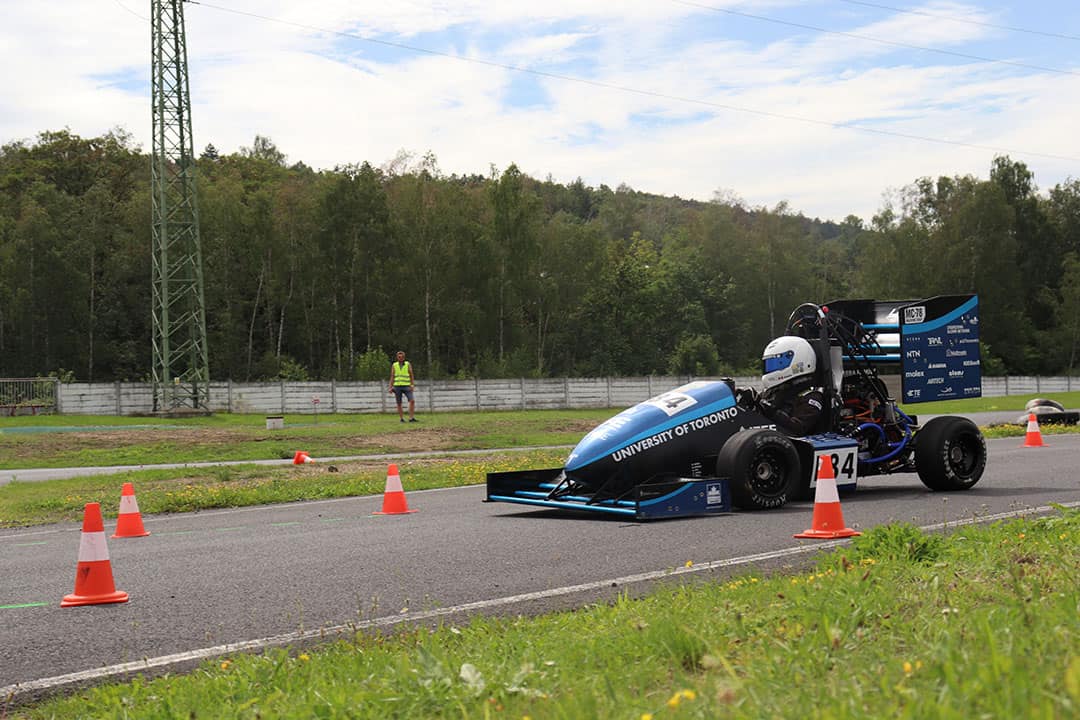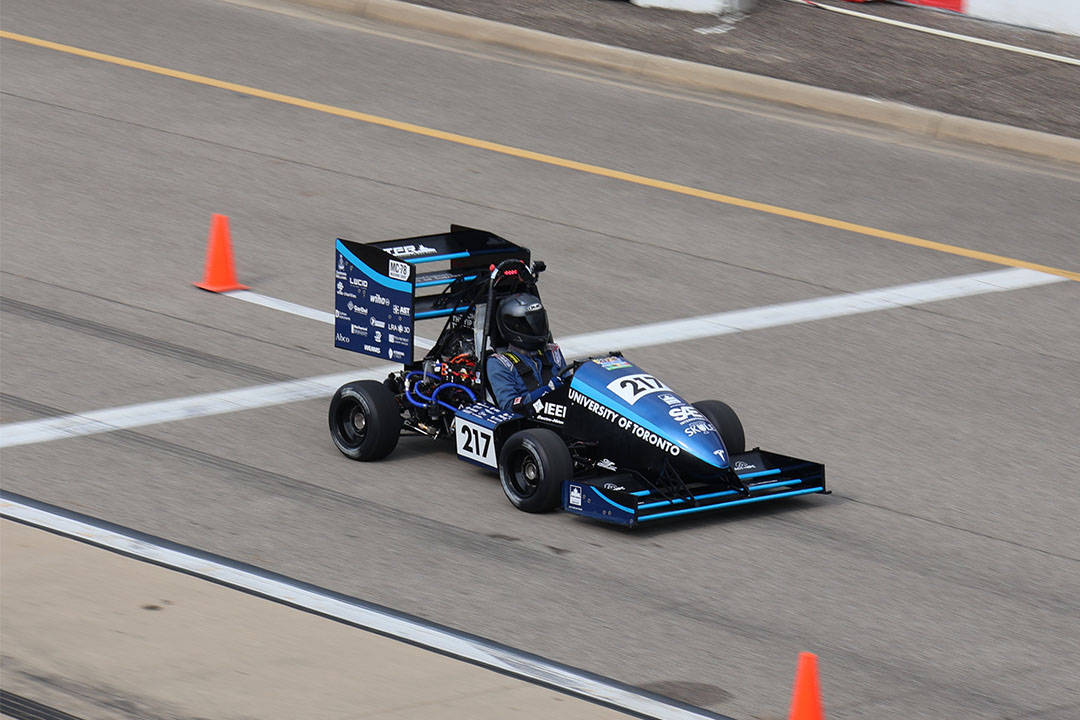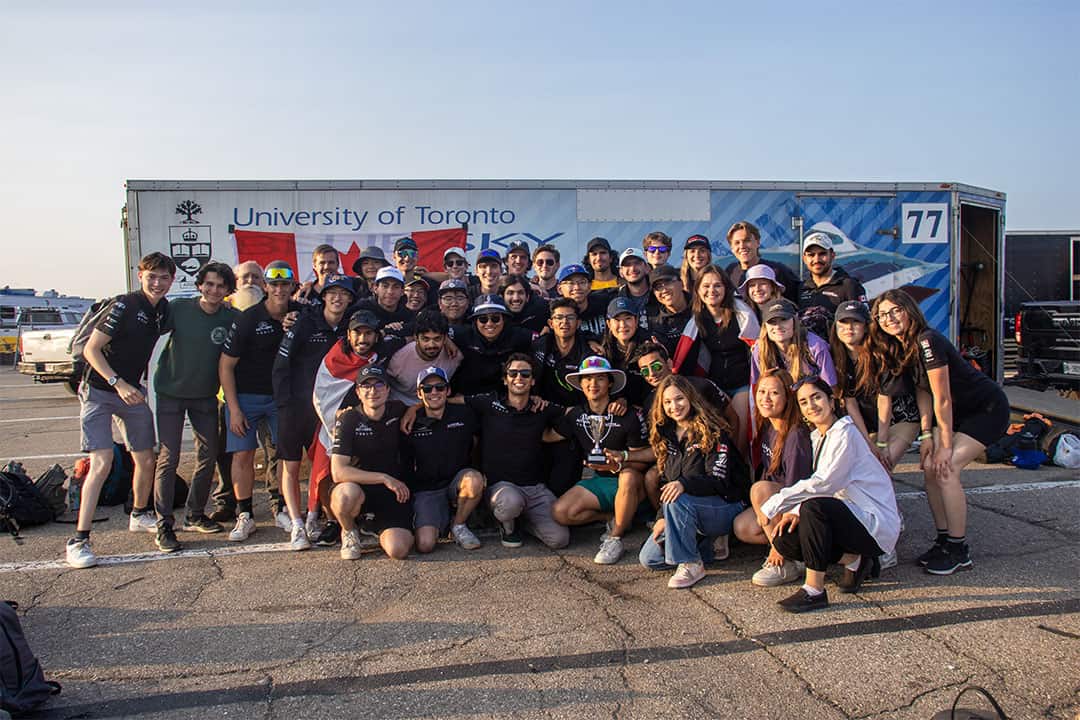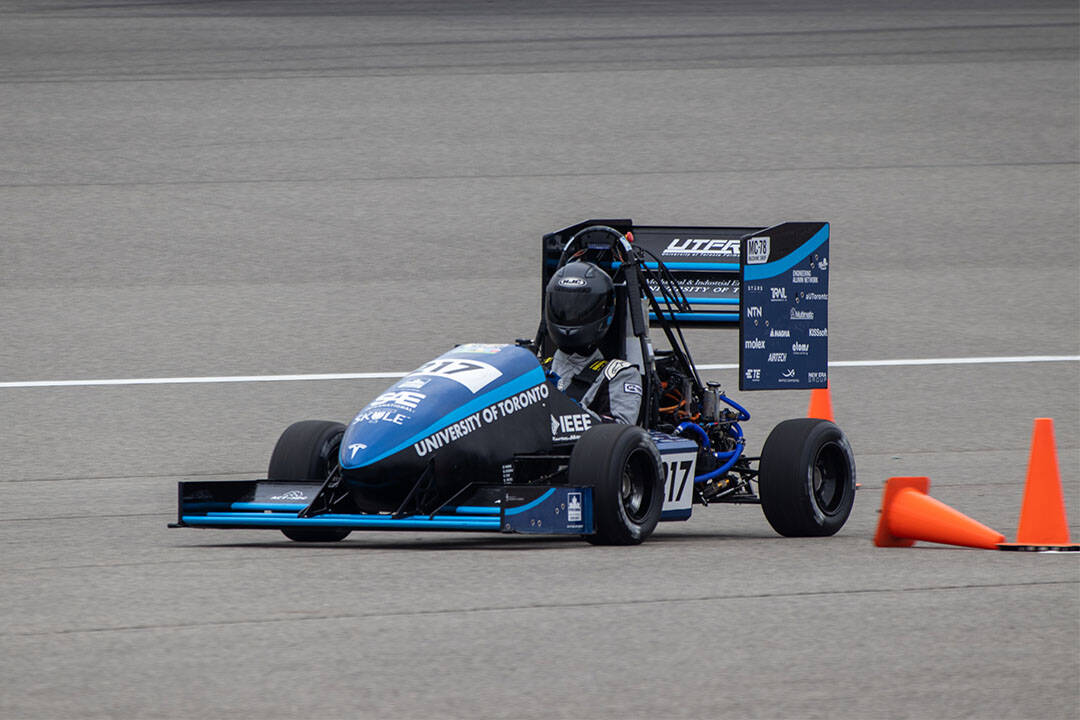In 1997, U of T began participating in the Formula Society of Automotive Engineers (FSAE) competition, where university students are challenged to design, create, and compete with an open-wheeled, single-seater car — a Formula-style vehicle — in a one-year cycle. Since then, the University of Toronto Formula Racing Team (UTFR) has become a home for undergraduate racing enthusiasts at U of T, all eager to get involved in the increasingly innovative and evolving automotive industry.
“I think we’ve got around 40 active members that are actively always doing stuff for the team,” said Daniel LaRosa, the UTFR’s team principal and mechanical technical director — and a fourth-year mechanical engineering student — in an interview with The Varsity. “[But] in total, we have over 100 members.”
Importantly, you don’t have to be an engineering student to participate. “All students are welcome,” LaRosa said. “We teach you a lot of the skills that you need to learn… so it’s pretty inclusive.”
“The big benefit is you get to apply your knowledge,” LaRosa added, when asked about the UTFR’s appeal for students at U of T. “It’s a massive benefit, to be able to [join] this team and actually start using some of the things that you’ve learned in school.”
Furthermore, a lot of team members move on to do internships at Formula racing companies, like Jaguar Racing, Williams Racing, and Red Bull Racing, while others find internships at automotive companies like Tesla. “The companies see a lot of value in doing the things that we do,” LaRosa said.
But what exactly does the UTFR do during the year?
Creating the car
“The process from having an initial design to having a running car is about eight months,” LaRosa explained. The team typically starts designing the car in around June, spending most of their summer designing the car. In September, the team uses their designs to manufacture parts. The manufacturing process lasts into the winter semester when all the parts come in, and the car can be assembled.
“At around [the] beginning of March, the car runs and we do [some] testing, tuning, [and] validation.”
The team does a lot of their own testing, setting up a mock competition by taking the car out to big parking lots or racetracks. “We’re [also] playing around with simulators, trying to simulate our car on a computer, so drivers can get a feel for it before they get to the track,” LaRosa said.
The team has four drivers, all of whom are contributing members of UTFR. “We don’t recruit people to just drive,” LaRosa explained. “It’s a student team, so we want to get the students that… are really involved with the team to get the [first] opportunity to drive the car.”
Multiple competitions
Once all the testing is done, the team begins competing. An FSAE competition is typically divided into two categories: static events and dynamic events. “The dynamic events are where your car actually runs and competes,” LaRosa explained. “And all the static events are presentation-based.”
For the static events, the car is presented to a panel of judges formed of automotive industry leaders. This includes a design competition, where the team presents the car’s design, as well as a cost competition. “Our entire car is costed down to the bolt and nut. And that’s presented to the judges, and they scrutinize how you costed your car,” LaRosa said. Finally, there is a business competition, where the team is judged on how the team is financed and managed.
“For the dynamic events, there are four major ones… acceleration, skidpad, autocross, and endurance [tests],” LaRosa said. Acceleration tests how well the car accelerates, while the skidpad is where the car drives on a figure-8 track, testing the car’s handling, responsiveness, suspension, and setup. LaRosa describes autocross as being similar to “a qualifying lap,” where the team gets higher points the quicker they finish the track. Finally, endurance is a 22-kilometre race that tests the car’s reliability and pace, and the driver’s skill.
This year, the team had a busy summer, travelling with their car to different competitions. In New Hampshire, the team finished in first place. Afterward, the team competed in the largest North American FSAE competition in Michigan. With over 70 teams participating, UTFR finished fifth. Finally, the team shipped themselves and the car out to compete in the Czech Republic for the Formula Student Czech Republic competition, ultimately finishing sixth out of over 40 teams. “It was a very successful season for us,” LaRosa noted.
Innovating and improving
Yet, the team is always looking to improve. This year, the team constructed and competed with an electric car for the first time ever. The 2019 cycle was the last time UTFR used a combustion engine for their car.
“[It was] because COVID hit,” LaRosa explained when asked about the move away from combustion. “The team decided that [it] was the right time to switch to electric.” This came with several new challenges the team had to overcome, like the new considerations that had to be made about battery management. UTFR built an electric car in 2022, yet it didn’t run. In 2023, the team tried again — and succeeded.
Furthermore, the team also now develops a driverless function. “The European [FSAE] competitions are moving in that direction of implementing autonomous driving as part of their competition,” LaRosa said when asked about the motivation to construct a driverless function.
LaRosa noted that moving into this new and innovative area helps expand the team.
“There’s so much to do with autonomous driving robotics, artificial intelligence, machine learning, deep learning. All these different cool things that are happening… I think are pretty relevant now, even to the students.”
For next year, the team aims to participate in three to four competitions, heading back to New Hampshire and Michigan before travelling to Europe to participate in some competitions. “We [also] run our own events, [and] we participate in a lot of sponsor events,” LaRosa added.
After their car failed to run in 2022, the goal last year was just to build a running car. “This year, I’ve tried to place more emphasis on the design cycle, [so] designing things with purpose [like by] starting to design things for performance and finding areas where we can improve,” LaRosa said. “The big goal is to try and just design a faster race car than we did last year… [it] sounds simple, but there’s a lot to it.”






No comments to display.